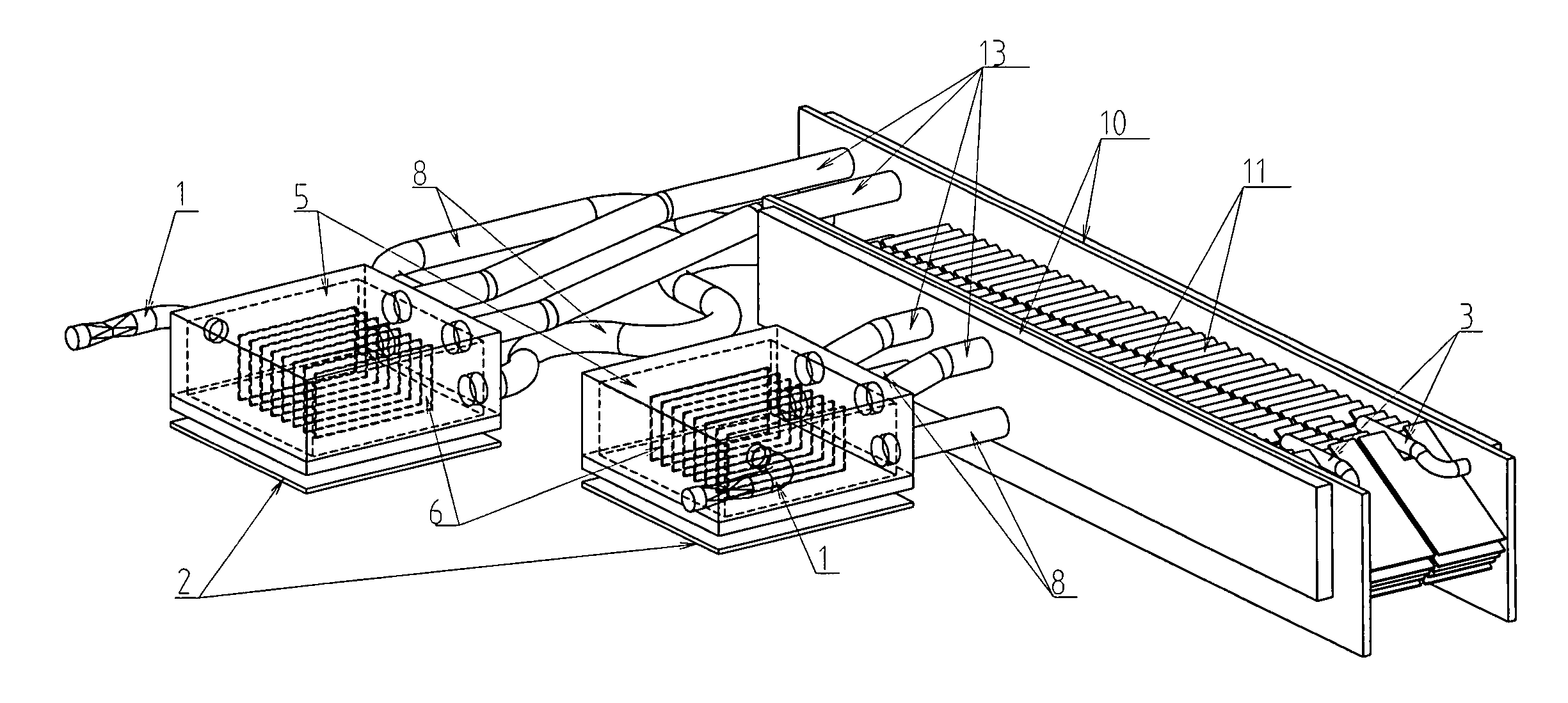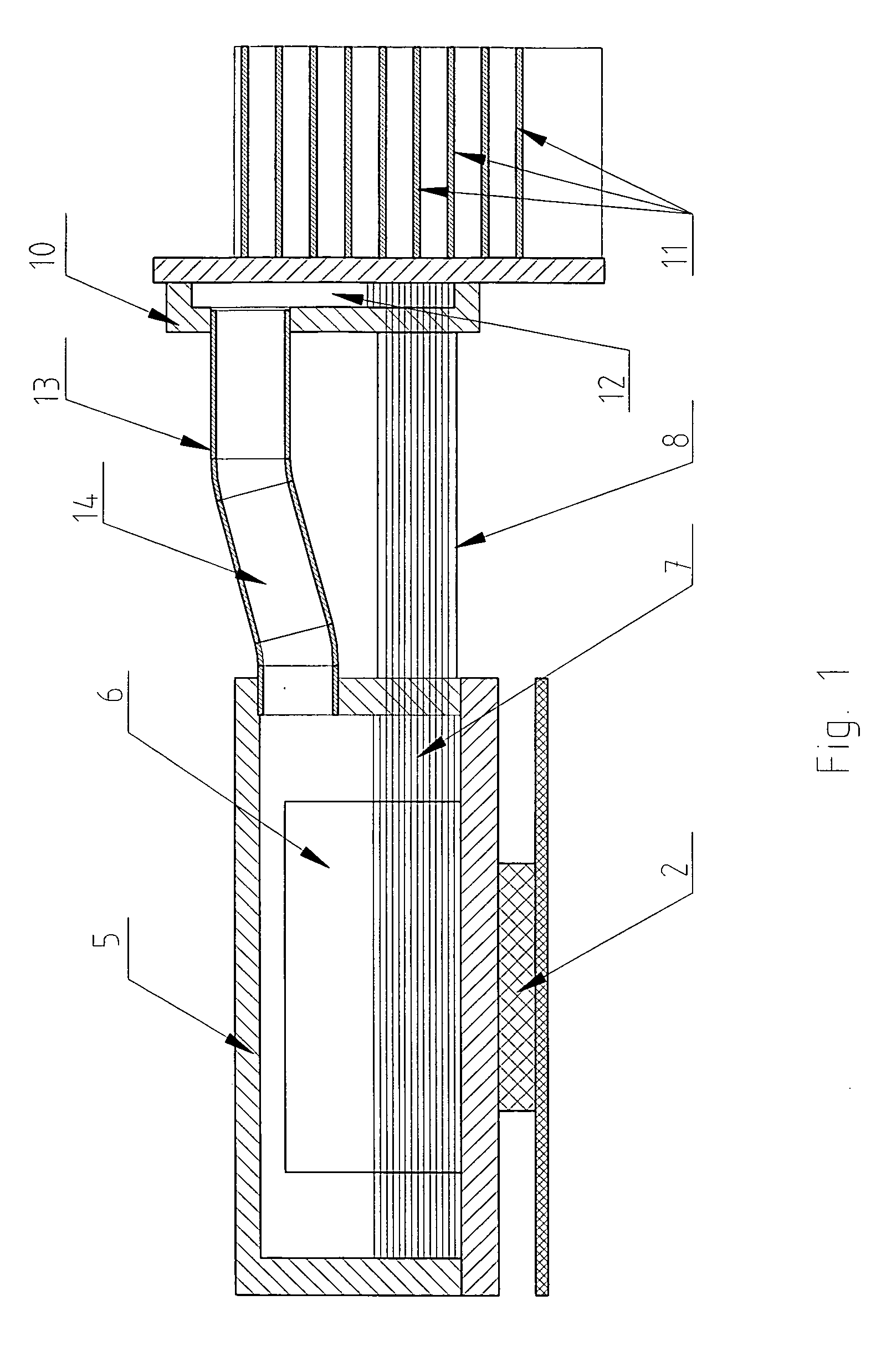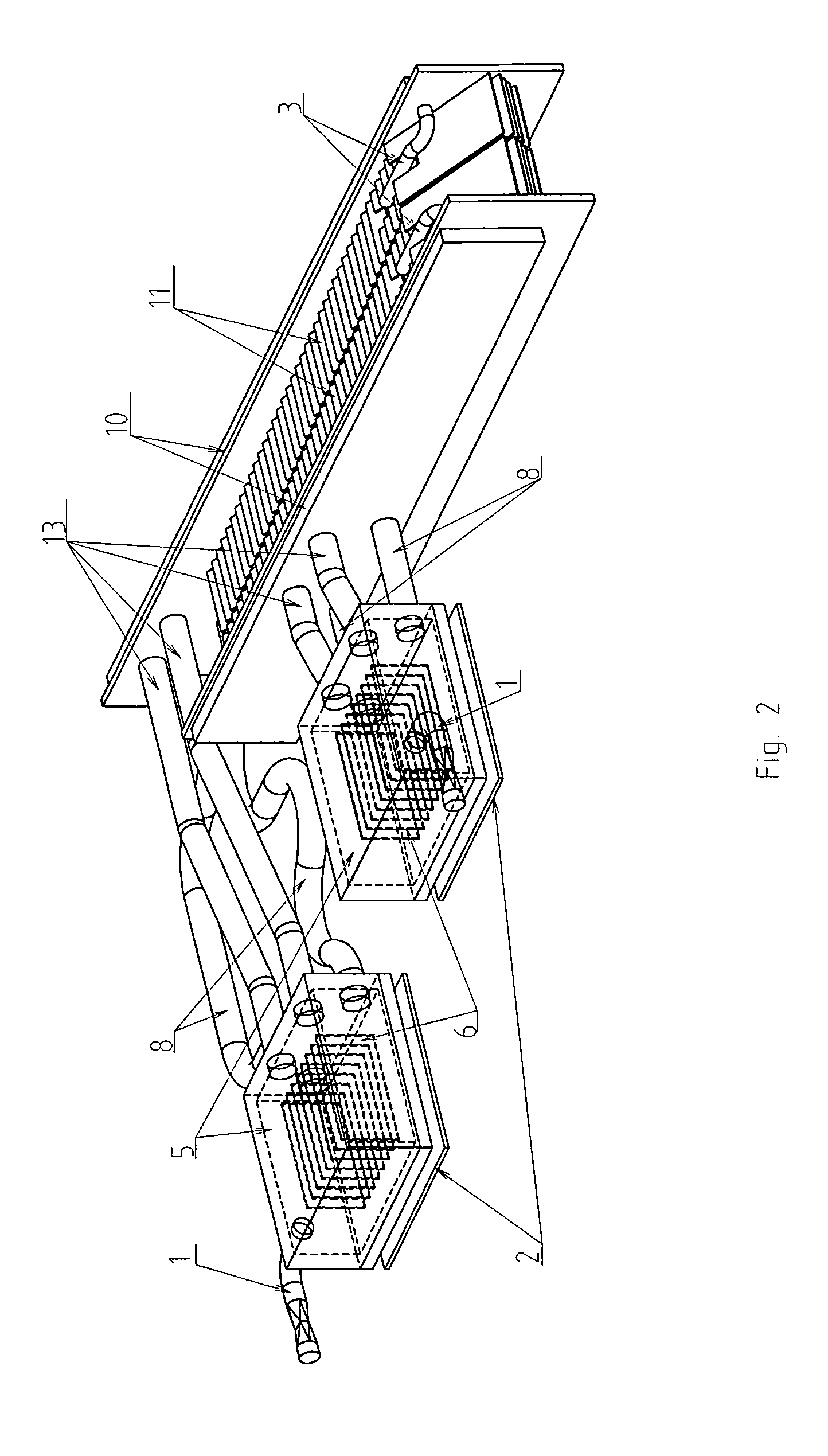Low-profile thermosyphon-based cooling system for computers and other electronic devices
a cooling system and thermosyphon technology, applied in the direction of lighting and heating apparatus, instruments, and semiconductor/solid-state device details, can solve the problems of insufficient space for cooling fins to extend above the condenser, the cooling properties are not significantly changed, and the available height is severely limited. achieve the effect of preventing chip damage or scratching, large surface area for heat distribution, and not significantly changing cooling properties
- Summary
- Abstract
- Description
- Claims
- Application Information
AI Technical Summary
Benefits of technology
Problems solved by technology
Method used
Image
Examples
Embodiment Construction
[0047] High-density servers are placed in rack-mountable cases approximately 17 inches to 19 inches wide and 1.75 inches high, or less, when laid flat. All devices, including cooling devices, within the case must fit within these dimensions. The height of the floor of the case, standoffs, circuit board, CPU socket and CPU itself leaves only about 1 inch between the surface of the CPU and the top of the case, so any evaporator or heatsink attached to top of the CPU or other heat source should not exceed 1 inch in height. A thermosyphon device within a case such as this will need to work with a very small amount of hydrostatic pressure moving the liquid. The load on the CPU, and therefore the heat production, may vary over the time, and the case is not necessarily placed precisely horizontally, so the design of the thermosyphon device should be suitable for varying conditions, including changes in the amount of heat produced by the CPU, level of liquid, and vapor bubbles in pipes. Hea...
PUM
 Login to View More
Login to View More Abstract
Description
Claims
Application Information
 Login to View More
Login to View More - R&D
- Intellectual Property
- Life Sciences
- Materials
- Tech Scout
- Unparalleled Data Quality
- Higher Quality Content
- 60% Fewer Hallucinations
Browse by: Latest US Patents, China's latest patents, Technical Efficacy Thesaurus, Application Domain, Technology Topic, Popular Technical Reports.
© 2025 PatSnap. All rights reserved.Legal|Privacy policy|Modern Slavery Act Transparency Statement|Sitemap|About US| Contact US: help@patsnap.com



